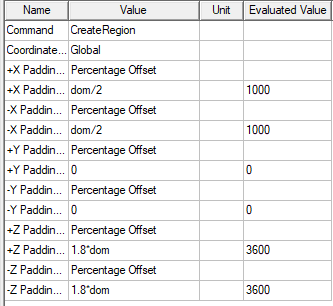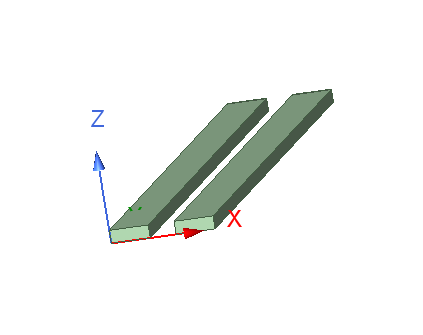-
-
May 9, 2025 at 10:23 am
stefan.ardeleanu
SubscriberI am studying self and mutual inductance and I wish to understand what are the main differences between Maxwell and Q3D when calculating those values. As I understand so far, both use the system's energy to determine the inductance. However, in Maxwell, the result changes a lot depending on how large the bounding domain is. In Q3D the calculation is done without a setting up such a domain.
The test is done on two parallel rectangular conductors, with 1A current flowing in the same direction. I tweaked the domain size in Maxwell so that it matches the Q3D result.
The domain in maxwell is drawn with the region command, having the following values:
1. What tweaks should I make in Maxwell so that I can ensure correct inductance calculations for similar rectangular structures?
2. Why does the size of the bounding box have such a big impact on those inductance results?
I would have liked to also upload the archived project, but I didn't see a way to do it.
-
May 12, 2025 at 7:12 am
Timos
Ansys EmployeeHi, this creates what's known as an open boundary problem. In such cases, the magnetic field does not stay confined near the conductor — it extends far into space. With FEM, we must artificially truncate the domain, and as the region grows, it includes more of the weak but non-zero field at the edges. Since inductance is calculated from the magnetic energy (L = 2W/I²), any increase in total energy due to these additional field contributions will increase the apparent inductance.

-
May 12, 2025 at 7:41 am
stefan.ardeleanu
SubscriberFrom this I get that, when using Maxwell the user must truncate the domain. However, in Q3D this is not required and, without setting up a domain, it solves the problem correctly.
Q3D calculates the inductance from the magnetic energy in the system, correct? Then, how does Q3D decide where to truncate the domain? -
May 12, 2025 at 7:44 am
Timos
Ansys EmployeeHi, in Q3D the process of determining the region size for truncating the domain is not explicitly required as it is in Maxwell. Q3D operates under the quasistatic approximation, which assumes that the size of the structure is small compared to the wavelength at the maximum frequency of interest. This allows Q3D to efficiently solve complex structures without the need for domain truncation. The general rule of thumb is that the size of the structure should be less than one-tenth of a wavelength. For structures larger than this, a full-wave field solver like HFSS is recommended to ensure all electromagnetic phenomena are accurately modeled. https://ansyshelp.ansys.com/public/Views/Secured/Electronics/v251/en/PDFs/Q3D%20Extractor.pdf#page=2231
-
- You must be logged in to reply to this topic.



-
3044
-
971
-
879
-
858
-
792

© 2025 Copyright ANSYS, Inc. All rights reserved.







